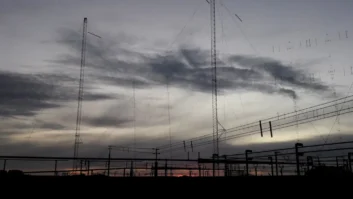There are lots of angles to explore concerning the FCC’s recent decisions governing low-power FM stations and FM translators. The commission is also taking public comments on decisions yet to be decided concerning allocation changes for both services.

REC Networks is an LPFM proponent and founder Michi Eyre would eventually like to get an LPFM license. RW asked Eyre a few questions via email to illuminate the commission’s challenging task of licensing more LPFMs as well as FM translators in various spectrum-squeezed scenarios.
RW: Please explain to our readers what REC Networks is and its place in the LPFM proponent landscape.
Eyre: Prior to our involvement in LPFM advocacy, REC was mainly involved in audio entertainment services over the telephone. Our history can go back to 1984. I got REC involved in LPFM back in the late 90s because I have always wanted to own a broadcast station and I felt that the LPFM service would be an excellent way for new entrants to get into broadcasting and get their voices heard.
REC really does not have any political, faith-based or even commercial affiliation. The recommendations that I have made over the years have been common sense ideas on how to improve the service for everyone. The LPFM Channel Search Tool came out as a result of the various ideas for LPFM I have made over the years. If I am actively proposing an idea, I will build that functionality into the tool and allow users to toggle it on. In addition to the front-end tools, REC also has a full back-end processing ability to produce large-scale reports on LPFM availability. This allows us to produce maps and other products to demonstrate LPFM availability and other statistical data.
For example, it was the REC-produced census data reports in the testimony by REC, Prometheus and Common Frequency that resulted in the FCC reducing the grid size from 31 x 31 to 21 x 21 in some markets. I have always kept REC as a “middle ground” between the different players involved in LPFM such as Prometheus, Amherst Alliance and Christian Community Broadcasters and we keep strong ties with these organizations. I still want to eventually get an LPFM station.
RW: We recently ran an item on REC’s “LPFM Channel Search Tool” that determines where new LPFMs could fit based on the FCC’s recent order. Based on that, do you have an idea of how many new LPFMs could fit in say a large, medium or small market, for example?
Eyre: I have not really had an opportunity to run any back-end reports since I have been working nearly nonstop on the front end tools. The availability will vary on how the FCC decides to handle second adjacent channel waivers …
The FCC has stated that when they determine the channel/points that translators will be required to protect, they are going to assume that an LPFM station will be able to get a second adjacent waiver. A look at the REC Channel/Point Viewer could give you a sneak preview of what is possible. For example, in the Los Angeles area, I could see a potential for 18 LP-100 stations and 36 channels for Phoenix. In New York City, Staten Island is the only thing that looks good unless they license lower-powered stations.
RW: The FCC asked whether LP-10s and/or LP-250s should be licensed. What does your group think about that?
Eyre: Over the past decade, I have heard the arguments for and against LP-10. I feel that there should be a “sub-100 watt” LPFM service but I do not feel LP-10 is the perfect fit. I feel that it would be more spectrum-efficient if the FCC would consider a more flexible sub-100 watt LPFM service.
The REC concept is something we call “LP-Flex.” Under LP-Flex, we look at a channel that is qualified for LP-10, then we increase the power in 5 watt increments nondirectional to see if the proposed facility would not overlap the fully-spaced nondirectional contours and buffer zones of other facilities. In some ways, you could call it the creation of LP-15, LP-20, LP-25 etc.
For example, at the corner of Hollywood & Vine in Hollywood, Calif., there are two LP-10 channels available if a second adjacent channel waiver is used. However, if we were to maximize those channels, one channel could go to 80 watts and the other one could go to 65 watts before there is overlap. Because LP-Flex uses the same exact distance separation methodology that LP-100, LP-10 and the proposed LP-250 uses, I do not see any way this method would violate the Local Community Radio Act.
REC definitely supports the placement of LP-250 stations wherever possible, but we should not do it at the expense of LP-10 (or LP-Flex). Many areas, including suburban areas that can get LP-100 channels right now could get LP-250. REC has done many studies on LP-250 availability and I do not feel that LP-250 availability should be geographically restricted. I also feel that LP-250 should be available to new applicants, not just upgrades for existing stations. But if given a choice of only being able to support a 250 watt service or a sub-100 watt service, I would rather see a sub-100 watt service to bring the first LPFM services to the urban areas.
RW: How likely is it for the FCC to open a new LPFM window this year?
Eyre: Barring any petitions for reconsideration filed by FM translator proponents, I feel pretty good that this current NPRM will be decided fairly fast and we may have the window in the fall before the elections.











